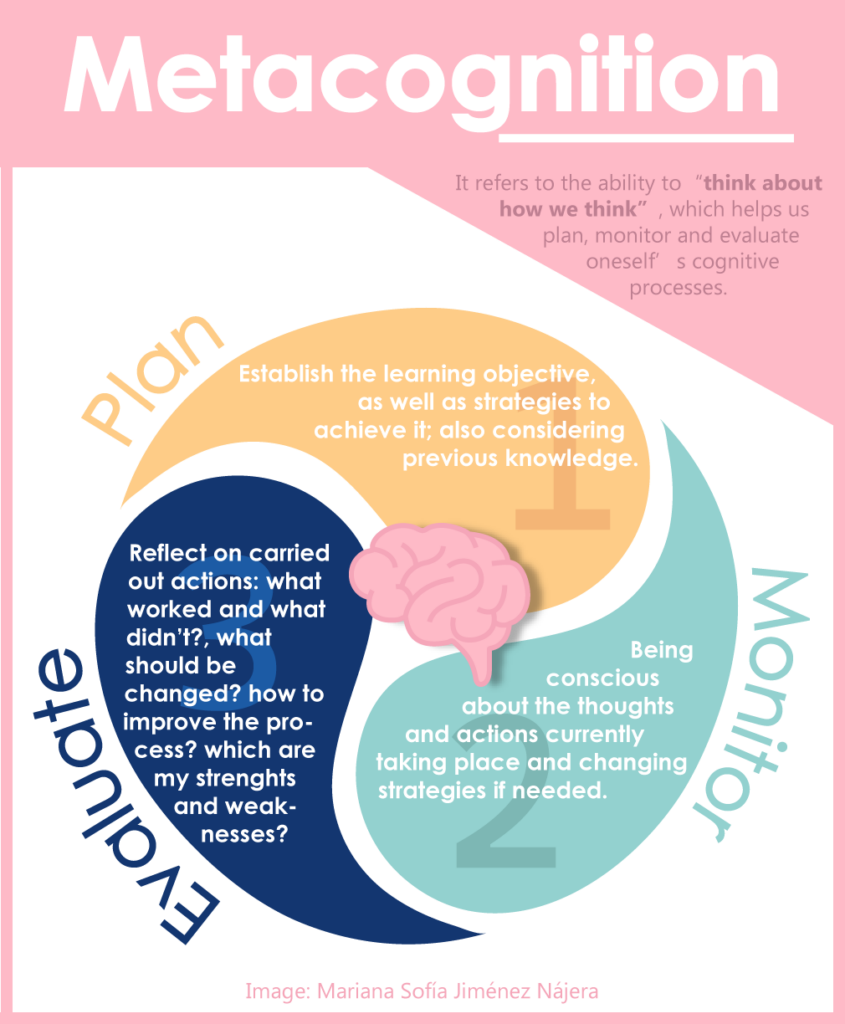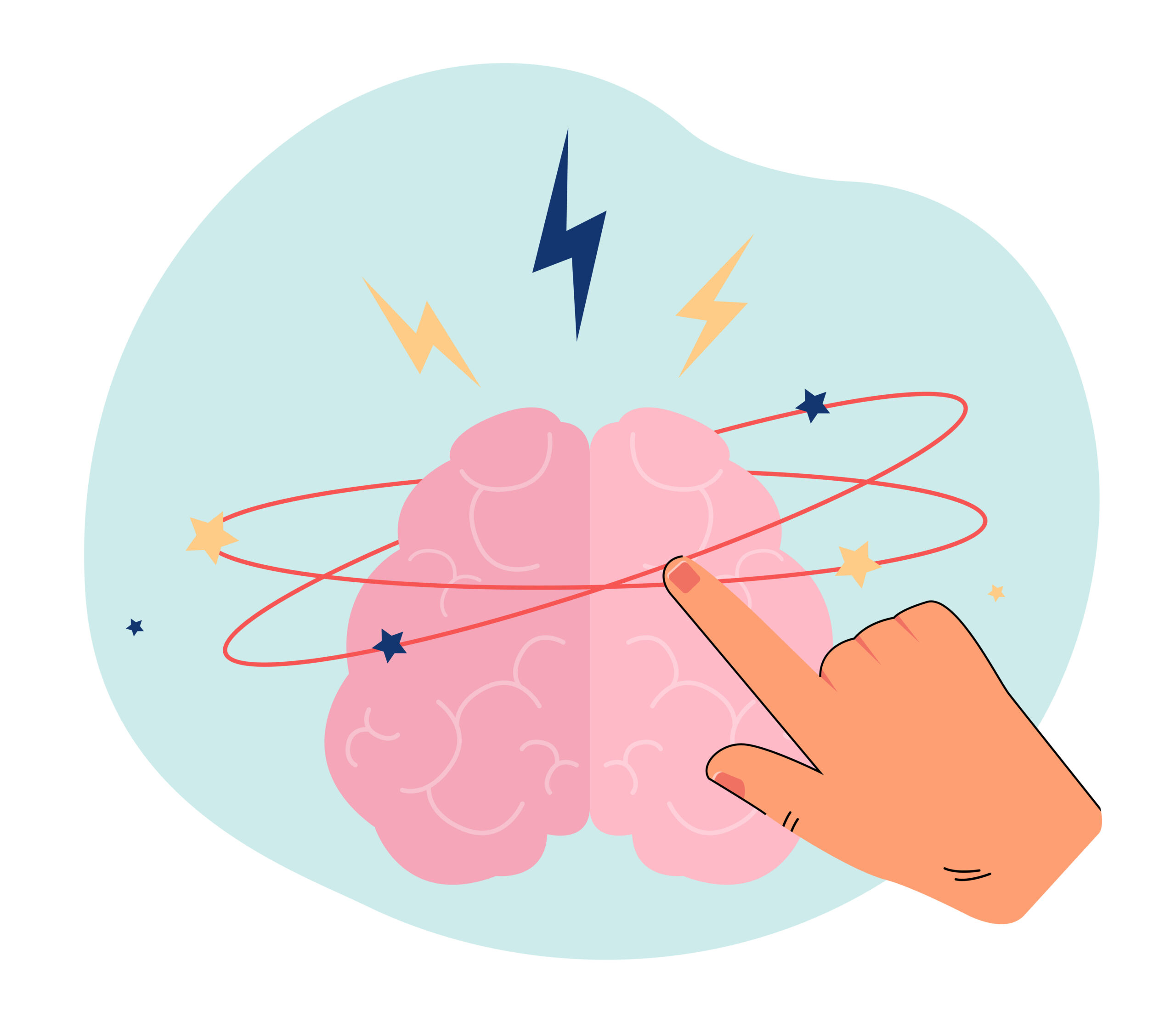Mirrors always encircle dance studios. In them, dancers can see themselves, and with the help of teachers continuously observing, they can correct their moves and posture to improve their techniques. In all areas, reflection is fundamental for learning. However, in education, there is no mirror to see ourselves, but there is a way to get to know and improve our cognitive processes, which is metacognition.
Why think about how to think?
Metacognition is the ability of people to recognize how they think and thus be able to plan, monitor, and evaluate their thought processes. This skill allows people to understand their learning objectives and how to achieve them through strategies, plus reflect on the strengths and weaknesses that led to their results.
Like dancers watching themselves in the mirror, people can improve their study techniques to receive new knowledge effectively and understand how they remember and process further information. It is also an aptitude that promotes lifelong learning and facilitates the study of any subject, which motivates people to continue learning and normalize their adaptations to new trends and learning situations.
Metacognition motivates people to be in control of their learning. By self-regulating their study and recognizing how they think, they know when and how to use the strategies that suit them best to achieve their learning objectives effectively. Creativity, analytical analysis, and effective communication are skills developed by being familiar with your thought process.
Metacognition encompasses a large part of learning in general; when studying something new, the following diagram can help you practice this skill:

As we can see, continuous awareness of one’s cognitive processes will improve learning results. People will discover interesting facts about themselves, such as what part of the day they are most productive, what distracts them from their studies, and the methods that most fit how they memorize or retain information.
What does metacognition look like in practice?
The following example illustrates the process of applying metacognition: Francis has an exam on his least favorite subject, History, soon. It is challenging for her to identify the dates and places where certain events of the Cold War took place, so she knows that underlining the text or summarizing events won’t be enough to achieve a satisfactory grade.
To avoid failing the subject, Francis decides to meet up with some friends a week before the exam to concentrate on the historical event’s dates. She draws a timeline to visualize the dates easily and shares key concepts with her colleagues. As the exam date approaches, Francis sits alone to review the study guide she made with her friends, recalling the comments made during the meeting.
When the exam day arrived, Francis could recall and associate her companions’ comments and the timeline with the events of the Cold War, which she made with them, so she felt secure when responding to her exam. Finally, Francis learned that she had attained a good grade, and at that moment, she knew she would prepare the same way for the next exam.
In this example, Francisco knew that studying alone does not help her review a subject that she knows is difficult for her; she anticipates study sessions with her friends and then studies what she reviewed with them alone in her room. Therefore, she knew how to manage a strategy to reach her goal. She used the timeline that helped him visualize the events and her colleague’s comments to recall them more easily. If Francis had left everything until the last minute, she would not have devoted enough time or studied without the company of her friends, and the results would have differed greatly.
How do I encourage metacognition in my students?
Being a transcendental skill, teachers at all educational stages often undervalue metacognition. Therefore, teachers must train in this skill to transmit it to their students and learn about their pedagogical actions to anticipate and evaluate them, improving how they share their knowledge in a given classroom.
Along these lines, we recommend some activities that can be implemented within the classroom to develop this ability:
- Inform: A good practice is to inform students what is expected at the beginning of the class, letting them know what topics will be addressed and the lesson’s objectives. This clarifies the panorama regarding what students will learn that day so they can establish strategies to prepare for it.
- Question: When asking a question in class and when a student responds to it, ask the reason for their answer. This way, the teacher and the class can visualize the student’s thought process, triggering a discussion among peers about various strategies that can produce the same result. Thus, students will learn ways of thinking different from theirs and perhaps adopt a different method than they usually use.
- Start a school diary: Considering the introversion of some students within the classroom, a teacher can use this option to boost the practice of metacognition. At the end of a class lecture, you can ask students to take a minute to write what they learned and how they learned on a piece of paper. If you have more time or want this to be a regular practice, starting a journal with these (or other) questions at the end of each class is a good idea.
- Peer feedback: To learn more about peer thought processes, small groups can review classroom activities and discuss each student’s thinking strategies to reach their goals.
- Self-correction: Mistakes are the best teachers; you learn more from them to avoid them in the future. A fascinating practice is this: When delivering exam results, the teacher provides the correct answers for students to compare with theirs and reflect on what they answered vs. what is right; thus, they correct their mistakes themselves.
People who use their metacognitive skills are more likely to learn actively because they know when something does not make sense and do their best to resolve their questions instead of continuing their studies passively. This type of learning develops soft skills (or power skills) such as collaboration and conflict resolution, which are essential for teamwork.
Metacognition allows us to reflect on ourselves, discover our strengths and weaknesses, and then evaluate our actions to correct them and improve our processes. Self-knowledge is the key to more effective and lasting learning. Do not hesitate to take a few minutes to reflect and get to know yourself better!
Translation by Daniel Wetta
This article from Observatory of the Institute for the Future of Education may be shared under the terms of the license CC BY-NC-SA 4.0 
)
)


)